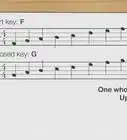This article was co-authored by Michael Noble, PhD. Michael Noble is a professional concert pianist who received his PhD in Piano Performance from the Yale School of Music. He is a previous contemporary music fellow of the Belgian American Educational Foundation and has performed at Carnegie Hall and at other venues across the United States, Europe, and Asia.
This article has been viewed 343,040 times.
While there are many musicians who can learn music by ear, most beginners should learn how to read music. Understanding how to count music is also important to dancers and can contribute to the enjoyment of a casual listener. Part of reading music is the ability to "count" it, or knowing how long to hold each note on the page. It is also important to understand what a time signature is. This article describes the basic principles of counting using 4/4 time and introduces time signatures.
Steps
Counting Rhythms
-
1Understand what a measure is. Music is divided into measures, which are designated by a vertical line. Notes in music are named based on how much time they take up within a measure. Think of the measure as a pie that can be cut into quarters, halves, eighths, or a combination of different notes.[1]
-
2Learn basic notation. In a 4/4 time signature, the names of the notes clue you in to how much of the measure they will take. This will necessitate a rudimentary understanding of fractions. A whole note will take the whole measure. A half note will take half of the measure. From there, you can figure out that:
- Quarter notes take a quarter of the measure.
- Eighth notes take one eighth of the measure.
- Sixteenth notes take one sixteenth of the measure.
- Notes can be combined to make one whole. For instance, 1 half note and 2 quarter notes makes 1 whole measure.
Advertisement -
3Practice keeping the beat. In an even rhythm, tap your heel and count to 4 repeatedly, like this: 1-2-3-4, 1-2-3-4. The speed is less important than keeping the time even between each number. A metronome can also be helpful in setting an even beat.
- Each full cycle of 1-2-3-4 is 1 measure.
-
4Practice counting basic note lengths. Say or sing “la” while continuing to keep up the counting in your head. A whole note will take the whole measure, so begin singing “la” at the number 1, and hold it until you have reached 4. You have just performed a whole note.
- 2 half notes make up a measure. Sing “la” for 1-2 then a new “la” for 3-4.
- There are 4 quarter notes in a measure. Sing “la” for each number you’re tapping.
-
5Add syllables for smaller notes. For eighth notes, you will need to divide the measure into 8 even pieces, but you are still only beating 4 times per measure. Add the word “and” between each number as you count like this: “1 and 2 and 3 and 4 and.” Practice this until it becomes easy. Each word is 1 eighth note.
- Use a similar principle to count sixteenth notes. You will need to fit 16 sounds into 1 measure and do it evenly. One common way to do this is to say “1-e-and-a, 2-e-and-a, 3-e-and-a, 4-e-and-a.” Remember that the numbers should still be played and sung perfectly evenly.[2]
- The same general idea can be applied to even smaller notes, but as these notes appear rarely, they are less important to master as a beginner.
-
6Understand what a dot means. Sometimes in music there is a small dot immediately after a note. This dot indicates that the note’s length should be increased by 50%.
- A half note, normally worth 2 beats, becomes 3 beats with a dot.
- A quarter note, worth 1 beat without the dot, takes 1.5 beats with a dot.
-
7Practice triplets. Triplets are when 1 beat is divided into 3 notes. This is tricky because otherwise all the notes you have practiced are even fractions. Vocalizing syllables can help you get the hang of triplets.
- Practice counting triplets by saying “1-e-and, 2-e-and, 3-e-and, 4-e-and.
- Remember to continue keeping the numbers even using a metronome or tapping your foot.
-
8Break the rules. A fermata is a sign that looks like a dot with an eyebrow over a note. When you see this symbol, it means that note can be held for as long as you like, regardless of what the music might say.
- If you are part of an ensemble, the director will determine how long it should be held.
- If you are performing solo, consider in advance what will be most appropriate length.
- Listen to recordings of your piece if you are uncertain how long to hold. This will give you a sense of what other performers have done and you can decide what sounds best.
Understanding Time Signatures
-
1Find the time signature. At the top left-hand corner of a piece of music you will see several notations. The first is a symbol called the clef, which typically depends on the instrument for which the piece was composed. Next there may be some sharps or flats. Finally, you will see 2 numbers stacked on top of each other. This is the time signature.
- For the first part of this article we used the signature 4/4, which is indicated by 2 fours stacked on top of one another.
-
2Understand the significance of each number in the time signature. The top number indicates the number of beats in a measure, and the bottom number is which note value gets the beat. It is most common for a 4 to appear on the bottom, giving the quarter note the beat.[3]
- In 4/4 time, the top note tells you that there are 4 beats in a measure, and the bottom note tells you that a quarter note gets the beat.
- In 2/4 time, there are 2 beats in a measure, but you are still counting a quarter note as a beat. So instead of counting 1-2-3-4, you would use that same pace but simply say 1-2, 1-2.
-
3Practice a waltz. Music set in 3/4 time counts 3 quarter notes to every measure. The waltz is always danced in this rhythm, and finding a song that is designated as a waltz may help you to hear the pattern more clearly. As you listen, count “1-2-3” in your head.
- The song “Christmas Waltz” has a distinctive waltz rhythm, and also contains the lyrics “and this song of mine/in three-quarter time,” tipping you off to the rhythm.
-
4Review less common time signatures. The top number always denotes the number of beats in a measure, and the bottom always signifies what note gets the beat. If the bottom number is an 8, then you should count eighth notes. If the bottom number is a 2, then you should count half notes.
- 6/8 meter is like the waltz in that the beats are grouped into threes, but there are 2 of them. Beats 1 and 4 should get the emphasis: “ONE-two-three-FOUR-five-six.” Beat 1 is the strongest beat.[4]
- 3/2 times means you should count 3 half notes for 1 measure. 1 half note is worth 2 quarter notes. Try counting evenly to 6, emphasizing the odd numbers: “ONE-two-THREE-four-FIVE-six, ONE-two-THREE-four-FIVE-six.” By emphasizing the odd numbers, you’re pointing out where each half note begins. By counting the even numbers, you’re ensuring a regular pace.
-
5Practice counting while listening to music. The time signature gives a distinctive rhythmic sound to different types of music. For example, composers often write marches in 2/4 time to give a distinctive feeling of boots stepping 1-2, 1-2.
- Pop, country and other music aimed at a broad audience typically has some form of 2 or 4 in the time signature because people like to tap their foot along with the music. Choosing a simple time signature makes it easy for a general audience to enjoy it.
- Jazz and other modern music often sounds disjointed because of unusual time signatures, such as 13/8, 5/4, and other uneven divisions. This will be a challenge to count, but may help you see how the time signature contributes to the overall feel of music.
Expert Q&A
Did you know you can get expert answers for this article?
Unlock expert answers by supporting wikiHow
-
QuestionWhat is an 8 count in music?
 Michael Noble, PhDMichael Noble is a professional concert pianist who received his PhD in Piano Performance from the Yale School of Music. He is a previous contemporary music fellow of the Belgian American Educational Foundation and has performed at Carnegie Hall and at other venues across the United States, Europe, and Asia.
Michael Noble, PhDMichael Noble is a professional concert pianist who received his PhD in Piano Performance from the Yale School of Music. He is a previous contemporary music fellow of the Belgian American Educational Foundation and has performed at Carnegie Hall and at other venues across the United States, Europe, and Asia.
Professional Pianist
-
QuestionWhat is 4/4 in music?
 Michael Noble, PhDMichael Noble is a professional concert pianist who received his PhD in Piano Performance from the Yale School of Music. He is a previous contemporary music fellow of the Belgian American Educational Foundation and has performed at Carnegie Hall and at other venues across the United States, Europe, and Asia.
Michael Noble, PhDMichael Noble is a professional concert pianist who received his PhD in Piano Performance from the Yale School of Music. He is a previous contemporary music fellow of the Belgian American Educational Foundation and has performed at Carnegie Hall and at other venues across the United States, Europe, and Asia.
Professional Pianist
-
QuestionWhat are the counts for music notes?
 Michael Noble, PhDMichael Noble is a professional concert pianist who received his PhD in Piano Performance from the Yale School of Music. He is a previous contemporary music fellow of the Belgian American Educational Foundation and has performed at Carnegie Hall and at other venues across the United States, Europe, and Asia.
Michael Noble, PhDMichael Noble is a professional concert pianist who received his PhD in Piano Performance from the Yale School of Music. He is a previous contemporary music fellow of the Belgian American Educational Foundation and has performed at Carnegie Hall and at other venues across the United States, Europe, and Asia.
Professional Pianist
References
About This Article
Before you can learn to count music, it's important to understand that music is broken up into measures, which are musical units of time. Each measure it then made up of 1 or more notes. For example, a whole note takes up a whole measure, while a half note takes up a half measure, and a quarter note takes up a quarter of a measure. Practice counting basic note length by saying or singing "la." If you sing it as a whole note, hold the note as you count to 4, and that is the measure. If you sing it as a quarter note, sing "la" 4 times as you count to 4 to complete the measure. For tips on how to practice counting while listening to music, keep reading!
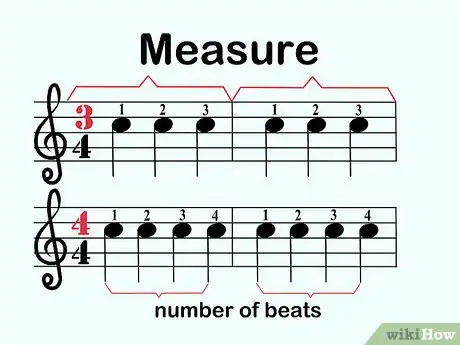
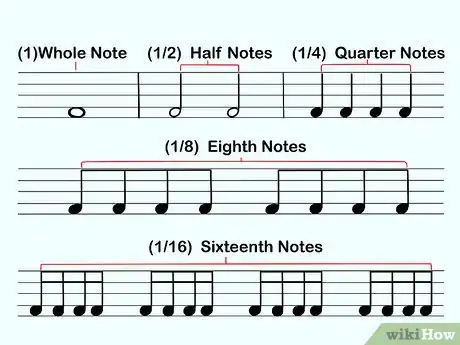
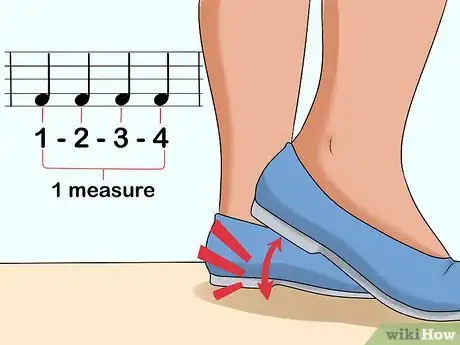
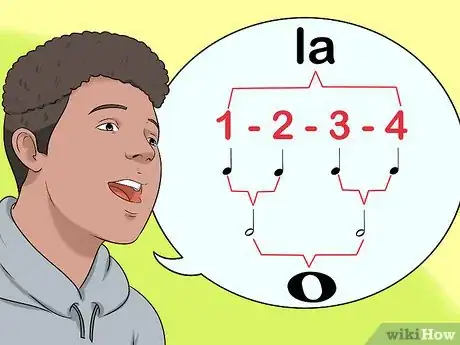
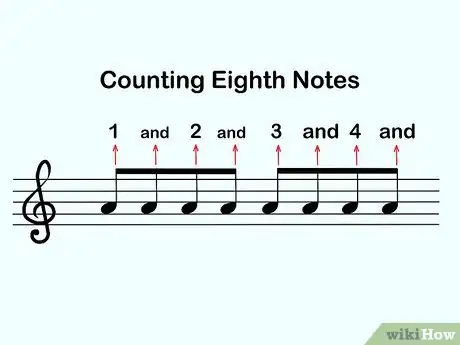
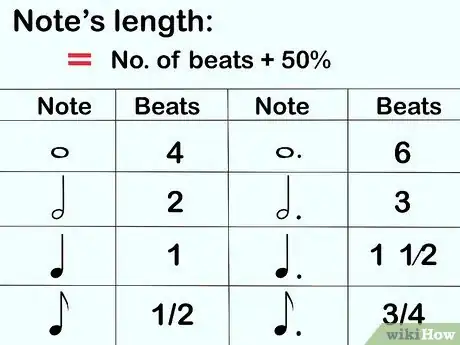
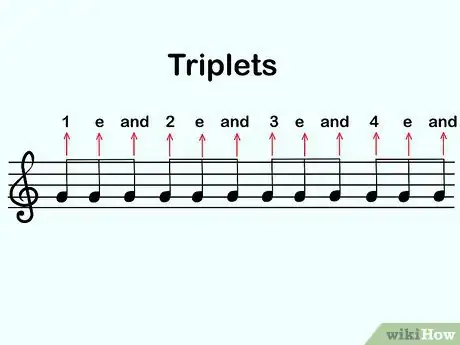


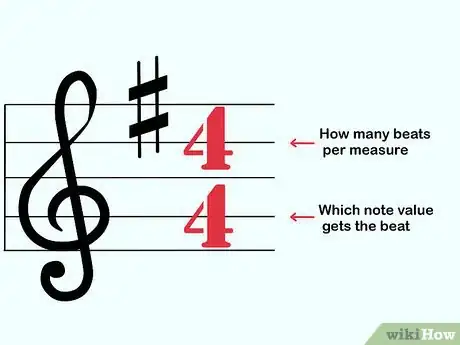
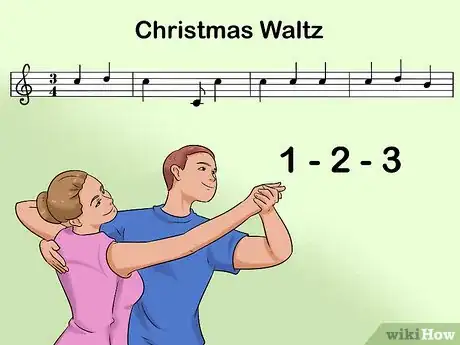
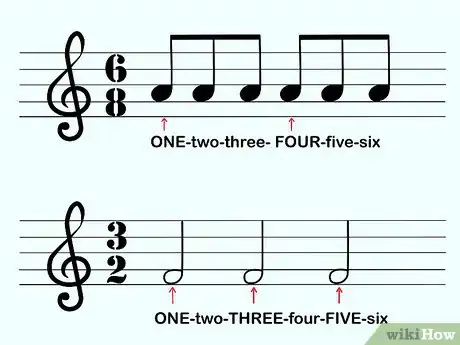
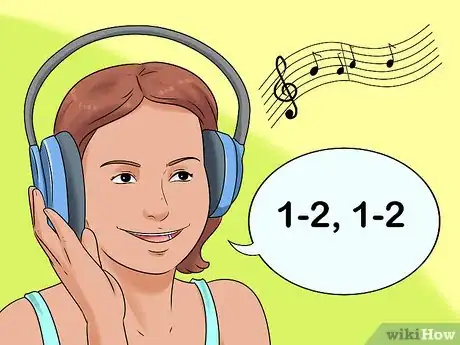
-of-a-Song-Step-9.webp)
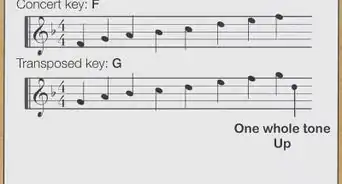



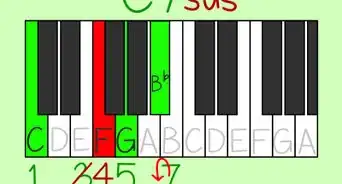

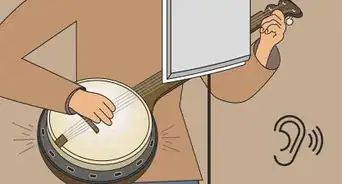
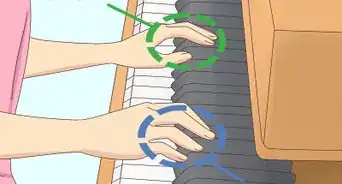

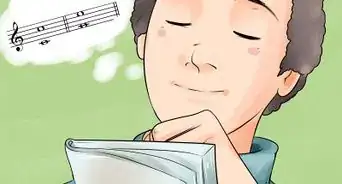

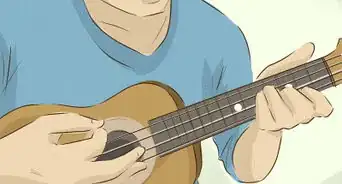









-of-a-Song-Step-9.webp)
